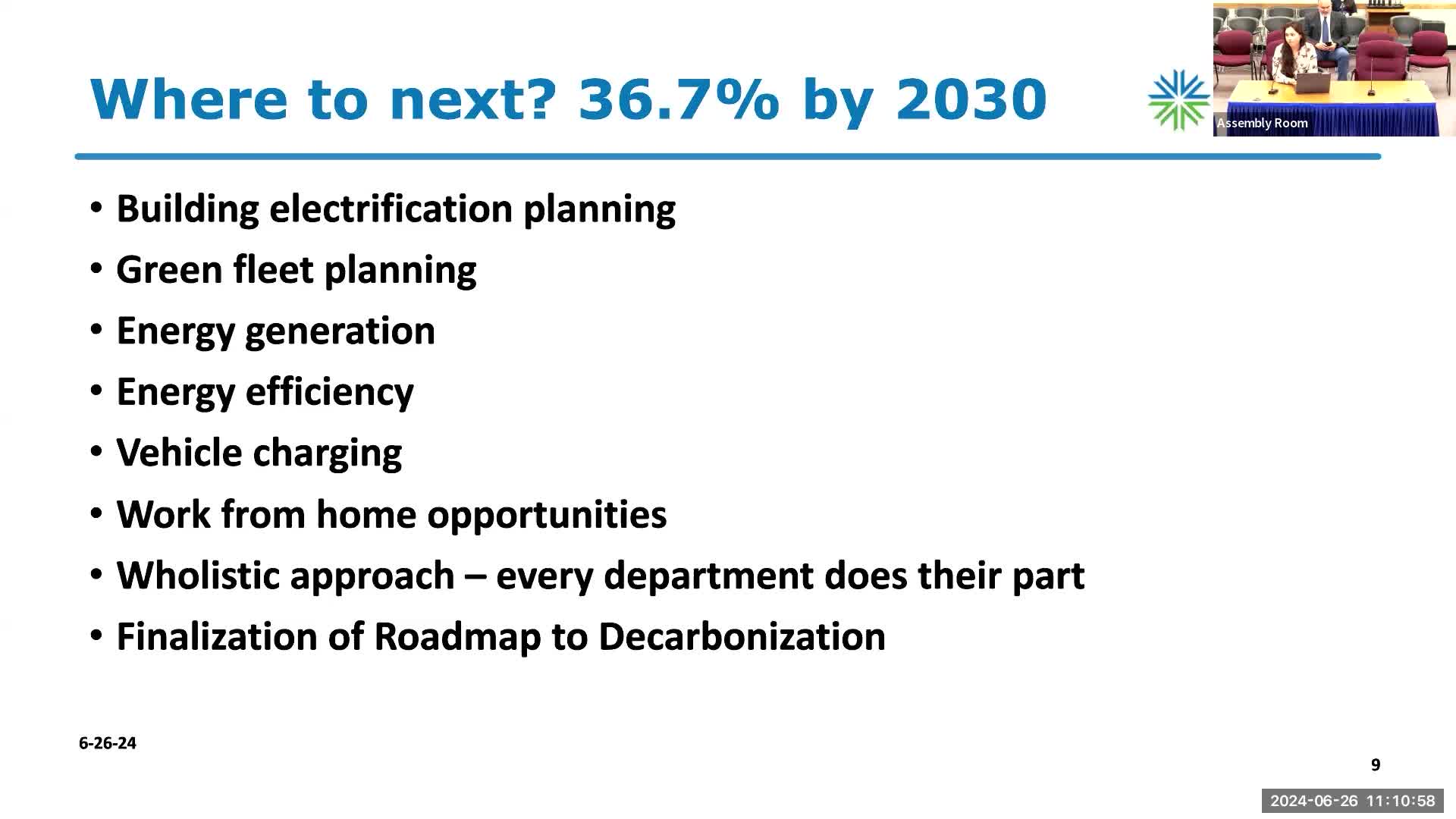Plans Unveiled for Major Green Infrastructure Overhaul
June 26, 2024 | Lake County, Illinois

This article was created by AI summarizing key points discussed. AI makes mistakes, so for full details and context, please refer to the video of the full meeting. Please report any errors so we can fix them. Report an error »

During a recent government meeting, officials discussed the pressing need for capital improvements to facilities and buildings, emphasizing the importance of a detailed plan to address emissions and energy efficiency. A proposal was made to potentially separate this initiative into its own project, given the significant financial investment required, estimated at over $500,000 from an energy efficiency conservation block grant.
The conversation highlighted the necessity of including these improvements in the broader roadmap to decarbonization, which outlines goals extending to 2040. Specific strategies will focus on identifying which buildings can incorporate renewable energy solutions, prioritizing actions that can be implemented in the short term.
Additionally, concerns were raised about the environmental impact of off-site cloud-based systems, particularly those powered by AI, which reportedly consume more electricity than traditional systems. Members stressed the importance of measuring the total carbon footprint, including emissions from these technologies, to ensure a comprehensive understanding of the county's environmental impact.
The meeting also touched on the county's vehicle fleet, which currently consists of 5% electric vehicles. Officials acknowledged the unpredictability of the electric vehicle market and discussed the need for a balanced approach to fleet electrification, considering the capabilities of larger vehicles like snowplows. Plans are in place to explore green fleet strategies that align with renewable energy goals.
Overall, the discussions underscored a commitment to sustainability and the need for detailed planning and measurement to achieve the county's environmental objectives.
The conversation highlighted the necessity of including these improvements in the broader roadmap to decarbonization, which outlines goals extending to 2040. Specific strategies will focus on identifying which buildings can incorporate renewable energy solutions, prioritizing actions that can be implemented in the short term.
Additionally, concerns were raised about the environmental impact of off-site cloud-based systems, particularly those powered by AI, which reportedly consume more electricity than traditional systems. Members stressed the importance of measuring the total carbon footprint, including emissions from these technologies, to ensure a comprehensive understanding of the county's environmental impact.
The meeting also touched on the county's vehicle fleet, which currently consists of 5% electric vehicles. Officials acknowledged the unpredictability of the electric vehicle market and discussed the need for a balanced approach to fleet electrification, considering the capabilities of larger vehicles like snowplows. Plans are in place to explore green fleet strategies that align with renewable energy goals.
Overall, the discussions underscored a commitment to sustainability and the need for detailed planning and measurement to achieve the county's environmental objectives.
View full meeting
This article is based on a recent meeting—watch the full video and explore the complete transcript for deeper insights into the discussion.
View full meeting
